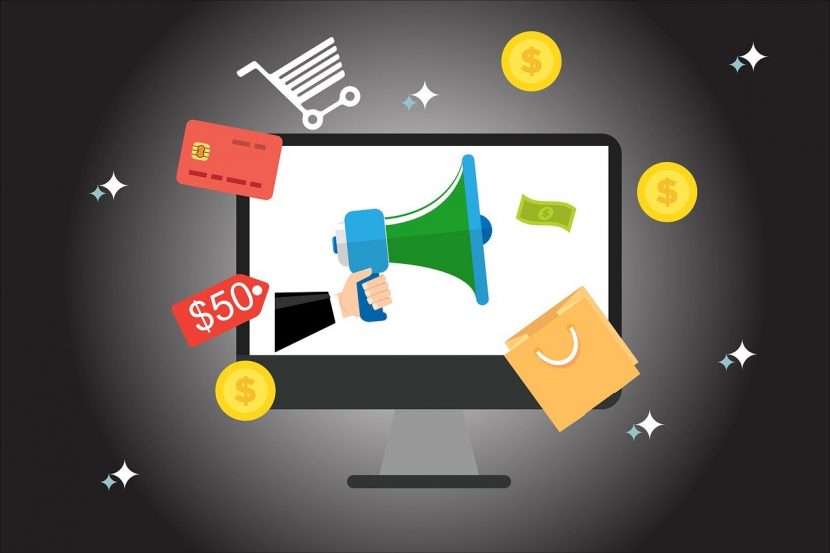
E-commerce or electronic commerce is not a monolithic concept, but on the contrary it provides many meanings to lean on. In Wikipedia's opinion it is a product buying and selling system and services that use the Internet as the main means of exchange. In other words, the figure of a class of commerce is promoted in which both collections and payments are managed through electronic means. Being its main characteristic and the one that helps to understand this concept in the business sector.
Anyway, and as on the other hand it is logical to understand, each business has a class of client to which it is directed, and based on this we can make a series of divisions that will be very useful to understand the objective of this article. That is, what is electronic commerce according to the commercial profile, and what provides different functions as will be shown below.
To clarify this meaning, it will be necessary to take into account not only the nature of this professional role. If not, also to whom the marketing of your products, services or items. So that in this way, we are in a better position to get to the bottom of the matter, which is ultimately what is at stake in this case.
Business Profile Classes
Of course, some of them will actually be very familiar to you, but others you may not have known until now. In any case, it is the moment to get out of doubt in this aspect that affects so much the so-called trade or online store.
B2B (Business-to-Business): companies whose end customers are other companies or organizations. An example could be a building materials store that targets interior designers or architects.
B2C (Business-to-consumer): companies that sell directly to the end consumers of the product or service. It is the most common and there are thousands of examples of fashion stores, shoes, electronics, etc.
C2B (Consumer-to-Business): portals in which consumers publish a product or service and companies bid for them. They are the classic freelance job portals such as Freelancer, Twago, Nubelo or Adtriboo.
C2C (Consumer-to-Consumer): company that facilitates the sale of products from some consumers to others. The clearest example would be eBay, Wallapop or any other second-hand sales portal.
Other divisions that may be very relevant

In any case, there are other concepts that are linked to what electronic commerce is and that you should know from now on. Although they are less known in the sector and that basically they are the ones that we are going to expose to you below:
- G2C (Government-to-Consumer).
- C2G (Consumer-to-Government).
- B2E (Business to Employer).
Something that shows that electronic commerce goes even further from the more traditional concept of the word. And that can affect the moment you dedicate yourself to this very special business activity. Because it must be taken into account that income that the e-commerce boom is closely linked to the growth of new technologies.
Advantages of creating a business or digital store
First of all, you have to assess that it is through this business format that you will be in a position to get more clients from now on. This is because you have the real option to buy and sell from anywhere in the world.
Another aspect that defines this concept is linked to the lack of hours in your store since it will be open throughout the day. So that in this way, the customer can buy it when he wants and at the desired time.
Another of his most valued contributions is the lower record of this commercial operation since you have to consider that a business of these characteristics does not need physical supports, which are the ones that ultimately reduce costs compared to traditional business.
The best profit margins is another added value in this kind of business because you can have higher profits than with a traditional establishment. Not surprisingly, all part of the fact that you sell much more than in traditional systems in the sale.
Disadvantages in its use
As is logical in all kinds of business there are a series of considerations that will not be very favorable for your interests as an entrepreneur in the sector. As for example, the ones that we point out below:
The products cannot be seen or touched by customers or users and it is a detriment that can limit online business operations from the beginning. Only through a very detailed description of the product can you correct this problem that you have in your online store.
Of course it's obvious but in order to buy and sell you need a ready-made device. At this point the vast majority could do it but in certain sectors, where the target audience is older or less “technological”, this can be a problem. You must take it into account from now on if you want to channel this process with most guarantees of success.
When a physical business opens its doors for the first time, it is already exposing itself to the customers that pass by. In an online business, getting visibility is more complicated than is usually thought. You can have a great product and a great platform, but if you don't work to gain visibility, no one will ever see it.
Do not doubt that from now on the competition in the online sector is increasingly accused and it is very important that you value it to put some other remedy in the business task.
Also technical difficulties can make you play tricks right now. In this case, it cannot be forgotten that an e-commerce requires a minimum technical knowledge that not everyone has. It is very important that you gather contributions that are based on a greater learning of the environment.
Increase in eCommerce in the last year

The turnover of electronic commerce or eCommerce in Spain reached a record figure of 2019 million euros in the second quarter of 11.999, which is 28,6% more that the 9.333 million euros that it entered in the same period of the previous year, according to the latest data offered by the National Commission of Markets and Competition (CNMC). Compared to the previous quarter, e-commerce sales increased 9,4%, since its turnover in the period between January and March of last year reached 10.969 million euros.
By sectors, the industries with the highest income were travel agencies and tour operators, with 16% of total billing; air transport, with 8,8%; hotels and similar accommodation, with 5,8%, and clothing, with 5,6%. For its part, the number of transactions registered in the second quarter of 2019 reached 211,3 million transactions, which represents a rise of 32,7% compared to the 159,2 million in the same period of the previous year.
In this context, passenger land transport and gambling and betting lead the ranking by sales, with 7,5% and 5,9% of the total, respectively. This is followed by the sale of records, books, newspapers and stationery with 5,8% and activities related to transport with 5,1%. Regarding geographic segmentation, e-commerce web pages in Spain accumulated 53,4% of revenues in the second quarter of 2019, of which 21,8% came from abroad, while 46,6% The remainder corresponded to purchases originating in Spain from websites abroad. By number of transactions, 42,1% of sales were registered on Spanish websites, of which 9,3% came from outside the country, while the other 57,9% occurred on foreign websites.
Increase in eCommerce: towards the EU and the United States
Likewise, the CNMC data includes what 95,2% of purchases from Spain abroad is directed to the European Union, followed by the United States (2,1%), being air transport (11,6%), hotels and similar accommodation and clothing (7,4% in both cases ) the most demanded sectors. In the case of purchases made in Spain from abroad, 64,0% comes from the EU. The areas of activity related to the tourism sector (which groups travel agencies, air transport, land transport, car rental and hotels) account for 66,8% of purchases.
On the other hand, e-commerce revenues within Spain increased by 22,3% year-on-year in the period between April and June, to 3.791 million euros. The tourism sector accounts for 27,8% of the turnover within Spain, followed by the Public Administration, taxes and Social Security (6,5%).